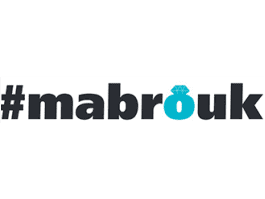DAVE GORDON
A new documentary series, Secrets of the Land, was produced by Israeli award-winning documentary filmmaker Igal Hecht, and takes viewers on a virtual journey through some of the oldest excavation sites in the history of the world. The series explores the connection between science and history, specifically looking at stories from the Tanach.
The area adjacent to the Kotel, with thousands of feet of subterranean space, is waiting to be rediscovered, and Hecht is keen on bringing to light the mysteries hidden therein. Archeologists recently uncovered an ancient market underneath the Kotel that is not yet open to the public. But, Secrets of the Land will allow curious viewers to see what all the excitement is about, as they view their first glimpse of this astounding discovery.
“The market was massive,” said Hecht. “You can clearly see shops and paths for people to walk. To think that all of it was there two thousand years ago, and beyond, is mind boggling.”
13 Episodes
Each of the 13 episodes of Secrets of the Land, filmed over the last two years, takes viewers behind the scenes of substantial digs in Israel, and features some of the world’s top archeologists and historically significant archeological sites. “We were looking for the most interesting excavations in Israel. We wanted to present an accurate portrayal of history in the holy land, and document those [archeologists] who were leading the way,” Hecht said.
In addition to on-site discoveries, Hecht visited the labs that crack the code of what is behind each artifact.
New Technology Unlocks Ancient Secrets
“One of the things that truly surprised me, and also helped change the direction of the series, was finding out about all the new forms of technology and science that were involved in modern day archeology,” Hecht said.
“I realized that the way archeology is explored today is very modern and innovative. The excavations themselves might be low-tech, but everything that comes after, such as carbon dating and things along those lines, are very high-tech.” For example, Hecht learned that archeologists found grape seeds in 2,000-year-old donkey feces, and through that, they were able to determine the types of people that lived in the area.
At one of sites where Hecht was filming, he was taken by a small, 2,000-year-old room, presumed to be part of a home during the time of the Second Temple. In it, Hecht saw several candle holders, and a set of stone stairs that had not been used in millennia.
Hecht and his crew, which included Lior Cohen, Gabriel Volcovich, Nikki Greenspan, and Julian Hoffman, take viewers on a journey through various parts of Israel. At each step, Hecht is excitedly learning along with the audience.
“I had very little knowledge [of archeology]. In fact, in the show, I don’t pretend that I do. That makes the show work. I am there experiencing the discoveries in the same manner that the audience does, as they watch at home,” he said. “The mixture of history and science that we feature in the series is extraordinary.”
Sites Featured from North to South
Among many sites, the crew visited Timna, the location of Solomon’s Mines, where Hecht was awed by the scenery: “The rock formation is something you’d see in Petra in Jordan or the Grand Canyon. There’s so much beauty and history to explore there.”
Other locales included the Tower of David, “Migdal David,” also known as The Citadel, located near the Jaffa Gate entrance to the Old City of Jerusalem. One episode features Shiloh, in Samaria (the Shomron), where the Israelites prior to King David’s time set up a sanctuary and city, and where the Ark of the Covenant, the “Aron HaBrit,” was housed for hundreds of years.
Also featured is Magdala, on the shores of the Kinneret, the Sea of Gailee, in the North. Magdala is home to an ancient city, where recent archeological excavations discovered the Migdal Synagogue, dating from the Second Temple, as well as 2,000-year-old mikvehs.
Hecht’s Documentaries and His Passion
Over the past quarter century, Hecht has been involved in the production of over fifty documentary films. Secrets of the Land is the latest in a string of Jewish-themed films, such as “Qassam,” about the residents of Sderot being attacked by Hamas rocket fire, and “Disengaging Democracy,” about the 2005 Gaza disengagement. An upcoming project includes “The Jewish Shadow,” a documentary film that explores the lives of Soviet Jews in 1970s Ukraine.
“Israel and Jewish issues have been at the forefront of my work. I also deal with a variety of other issues and topics, but I keep coming back to what drives me,” Hecht said. “The simplest answer is that this is just what I am most passionate about. Israel is my home. I was born there. I am extremely passionate about it in every aspect possible. It holds a massive place in my life and therefore my career. My Judaism derived from that. The two are forever intertwined for me and into my work.”
Secrets of the Land was not merely another project for Hecht. It was driven by his passion to help the Jewish people defend their rightful claim to Israel as their homeland.
“I think the biggest takeaway for Jewish audiences is the historical and unbreakable connection of the Jewish people to Israel, Judea and Samaria, to Jerusalem, to the Galilee, and so on,” he said. “[The series shows] that archeology truly proves that the Jews were, in fact, living in Judea and Samaria, Jerusalem, and all over the Fertile Crescent, thousands of years ago.”
“These are not only places and words in the Torah. Archeology and science help explain who was there years ago, and why this land is so important.”












